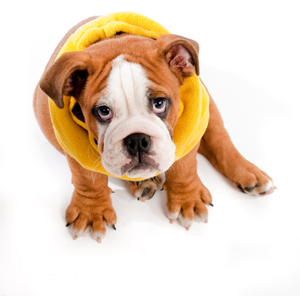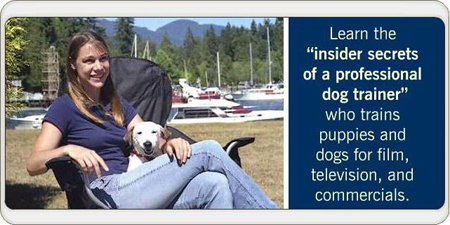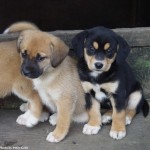
 Sit, heel, stay, leave it, roll over. These are all very common commands that most dogs learn. But, if you were given the tools to teach more than that, would you be interested?
Sit, heel, stay, leave it, roll over. These are all very common commands that most dogs learn. But, if you were given the tools to teach more than that, would you be interested?
And if it were affordable and effective, wouldn’t you like to know about it?
We spend a lot of time scouring the internet for the best puppy training tips, tools and techniques. Did you know you can successfully train your dog online? If your dog needs training, or if you feel your dog could benefit from a refresher training course, we here at Best Puppy Post recommend one of the most sort after dog trainers, Dove Cresswell.
The biggest advantage of these top 50 dog training online videos is the fact that you can access them right on your smart phone, iPad or Tablet. Mobility and portability have become a huge part of our lives and this platform opens up huge potential for your dog to become smarter, be more obedient, learn new tricks and commands and more.
 If you’re serious about training your dog and giving him/her the best input available that will have lasting and life-long positive benefits, then you must consider the inside secrets from this trainer to the pet stars.
If you’re serious about training your dog and giving him/her the best input available that will have lasting and life-long positive benefits, then you must consider the inside secrets from this trainer to the pet stars.
With a successful career in the dog training industry, Dove Cresswell has made her mark in an impressive line-up of movies:
Once Upon A Time. TV Series 2011
Diary Of A Wimpy Kid 3. Feature Movie 2011
Santa Puppies. Feature Movie 2011
Level Up. TV Series 2011
This Means War. Animal Coordinator
Marley & Me: The Puppy Years (video) – Animal Trainer (dogs)
Red Riding Hood – Animal Trainer (uncredited)
Cats & Dogs: The Revenge of Kitty Galore – Animal Trainer (dogs)
Marmaduke – Animal Trainer (dogs)
Top 50 Dog Training Online Videos with Dove Cresswell
Dove Cresswell has developed a super set of dog training online videos that cover every aspect of canine behavior and obedience. All of which we’ve viewed and highly endorse for dog owners at every level.
Some of the things you will learn from these videos include:
Obedience essentials
Problem behaviors
Advanced lessons and tricks
Puppy Food Aggression
Dog Toys
Stop Chewing Items
Puppy Crate Training
Socializing New Puppies
Choosing the Right Dog Food
There are 30 good reasons why these videos can help you and your dog. Click here to find out more.
We have researched countless videos and training programs and have found this series to be the best and most effective dog training advice available. We’ve examined books, videos, tutorials and investigated just about every dog obedience training method under the sun and if you’re looking for dog training tips and techniques that work, then we’d suggest you look no further.
There’s no shipping and handling, DVDs or physical product, as it’s all available to you online. Plus, you can stay in touch with Dove on her blog for updates and special features.
More things you will learn from this affordable dog training online video series:
Training Session Tips
Down
Heel
Choosing A Dog Trainer
Long Line Recall
Stay
Come When Called
Boundary Training
Heel Sneak Away Game
Toy Dogs
Down Stay
Off Leash Recall
Go To Bed
Loose Leash Walking
Sit
Collars, Harnesses and Leashes
Stand
Leave It
This highly recommended video series will be the best purchase you’ve made for the benefit of both you and your dog. Dove Cresswell’s dog training online will change your life and make your dog even happier than before. A happy dog is a well-disciplined and well-trained dog. From the day that a dog is born, they are looking for the security of structure and training, and their mother’s begin training them from day one.
To continue with the natural process of learning will create a stable, secure and obedient dog. And, perhaps most important of all, it will establish you as pack leader. This is what your dog is actually looking for in life as this is the social structure that dogs relate to. Dogs need you to be their leader, and these top 50 dog training online videos will enable you to create that bond your pet needs for a happy and well-balanced life.
We here at Best Puppy Post rate this online dog training series as a 10 out of 10.










